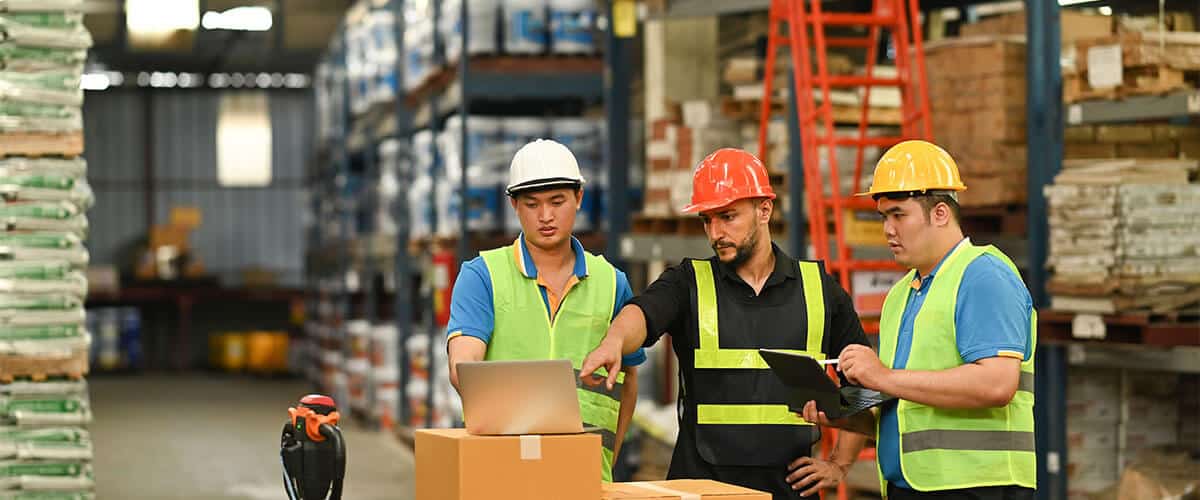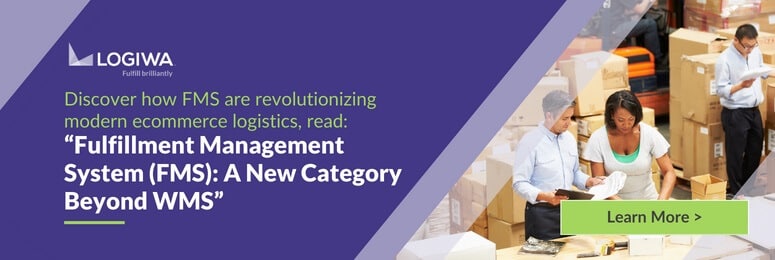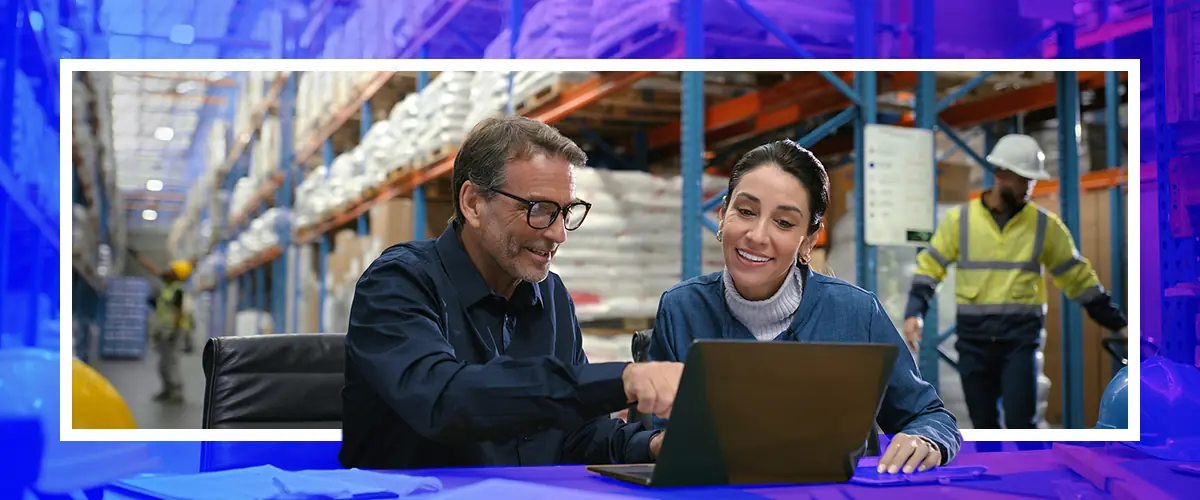Knowing which system has the right functionalities to meet your business’s needs will help ensure you navigate the challenges of modern fulfillment successfully. In recent years, the rise of ecommerce and growing market pressures have made finding the right WMS solution essential to ensuring product variability, consumer loyalty, and high-efficiency fulfillment.
Setting aside any Enterprise Resource Planning (ERP) solutions (which may or may not include some form of warehouse management), there are three WMS tiers to choose from. Each has its pros and cons, depending on the size and complexity of your fulfillment network.
Let’s discuss the three WMS tiers, including what to expect with each and how to select the ideal tier based on your operation’s needs.
The Three WMS Tiers
Although each WMS tier has different features and levels of functionality, all three work to reduce lead time and improve fulfillment results. When successfully implemented, all warehouse management systems help to increase operational accuracy and order fulfillment speed while minimizing the costs associated with distribution and labor.
With most WMS technology, regardless of whether it is Tier-1, 2, or 3, you can expect to benefit from:
- Streamlined data capture and reporting
- Consistent inventory management and order fulfillment accuracy
- Higher efficiency workflows within your warehouses
- Better operational insights for informed decision-making (ex. demand forecasting)
- Lower operational costs
That said, the three WMS tiers offer different levels of performance and sophistication. Tier-1 is considered the most robust category of WMS, while Tier-3 is the most basic.
As a general rule, as you descend from Tier-1, the intricacy, overall capabilities, and cost of the solution will decrease. Tier-1 offers multiple functionalities, can be highly customized, and offers connectivity that supports complex fulfillment network operations.
Tier-2 is similar to Tier-3 (which focuses on basic inventory management for a warehouse), but is typically able to expand its functions to include things like automation system integrations and the ability to manage multiple warehouses.
Unlock a personalized tour of Logiwa IO
WMS Tiers: Pros & Cons of Tier-1, 2, and 3
You’ll get the most out of your WMS platform if you choose the right tier. Let’s look at each category’s primary characteristics so you can better identify which of the three WMS tiers is ideal for your business.
Tier-1 WMS
Tier-1 WMS is the most sophisticated category of WMS solutions. These systems come with the highest degree of functionality and interconnectivity with other systems, making them invaluable for high-volume, large-scale operations.
Whether you oversee several fulfillment centers or a global fulfillment network, Tier-1 WMS solutions are sure to support steady growth and flexibility on every level.
- Pro: Most systems offer in-system configurations, so you can adjust automation rules and upgrade workflows without halting operations or reprogramming software.
- Pro: These systems come pre-integrated with solutions and offer built-in tools (ex. measurement and currency rate exchanges, dimensioning tools, rate shopping, etc.) without added costs that you can adjust as needed.
- Con: Tier-1 systems require the most capital investment and take (on average) the longest of Tier-1, 2, and 3 to get up and running.
- Con: Tier-1 WMS platforms require a much more intensive implementation process. This process typically requires you to work with the provider’s implementation teams, which oversee installation, training, and ongoing technical support.
Although a Tier-1 system costs more and can take more effort to launch, it can become a permanent platform for your operation. A Tier-1 option does not need to be upgraded or replaced every few years but will adapt right alongside your business. Don’t wait for your operation to outgrow your system before making a change!
Tier-2 WMS
Next on our list of WMS tiers is Tier-2. This category offers more capabilities than Tier-3. You might say that Tier-2 WMS solutions are Tier-3’s more flexible cousin since these systems offer robust avenues for automating warehouse processes and connecting with other solutions.
- Pro: Tier-2 solutions are built to integrate with warehouse control systems (WCS) retrieval systems (ASRS), conveyors, replenishment systems, autonomous mobile robots (AMRs), etc.)
- Pro: Tier-2 systems can be programmed to handle multi-warehouse environments
- Con: These systems cost more than Tier-3 options and can take a longer time to implement.
- Con: Although Tier-2 systems can be modified to match more of your warehouse’s needs, this process can become costly as you need to re-program or change functionalities, integrations, and features.
Tier-2 WMS solutions are ideal for operations that are outgrowing manual processes and looking to take the next step in their fulfillment growth without taking on too advanced or expensive of a solution.
Tier-3 WMS
Tier-3 WMS systems offer basic WMS functionalities that allow you to manage the flow of materials in and out of manual warehouse environments.
Although they’re standalone systems, Tier-3 options can be integrated with picking systems and ERPs to help connect the various areas of your warehouse.
If you want help with inventory slotting, labor management, or transportation logistics, you would need to clarify with your provider that these add-ons are possible.
- Pro: Tier-1 systems assist with inventory management, including the ability to move inventory from receiving through putaway, storage, picking, packing, and shipping
- Pro: Tier-1 options require the lowest capital investment as they’re the fastest and easiest to install.
- Con: These systems don’t typically support multi-warehouse operations or complex fulfillment networks.
- Con: Tier-1 platforms lack flexibility, meaning you have to change your established processes and workflows to match those that are possible for the WMS. This limits your warehouse’s growth.
If you’re looking for an inexpensive, effective inventory solution, a Tier-3 WMS will more than likely suit your needs.
But be warned, trying to mesh other software with a Tier-3 WMS (as opposed to upgrading to a Tier-1 or Tier-2 solution) can be costly and difficult to execute.
Transform Your Warehouse Operations With Logiwa’s Tier-1 WMS
When it comes to choosing between WMS tiers 1, 2, or 3, it’s important to reflect not only on your current operations but also on the direction you want to grow. Each of the WMS tiers mentioned above will help your operations, but how far will they take you?
Do you want your operations to improve or transform?
Logiwa created a Tier-1 cloud WMS to be a long-term solution for our clients. As an ecommerce fulfillment system, our Tier-1 WMS was built to execute data-driven operations and provide unparalleled visibility and control over order fulfillment success.
As a Tier-1 solution, Logiwa WMS is highly configurable and can be programmed to meet the specific needs of B2B, DTC, or hybrid operations.
From smart inventory management and optimized order routing to our pre-built integrations for most leading ecommerce and marketplace partners, Logiwa WMS supports limitless growth and industry flexibility. Learn more about working with a Tier-1 WMS by requesting a demo today.
Modern cloud WMS System built specifically for B2C and DTC fulfillment
Warehouse Management
Modern digital WMS powers a modern fulfillment experience






